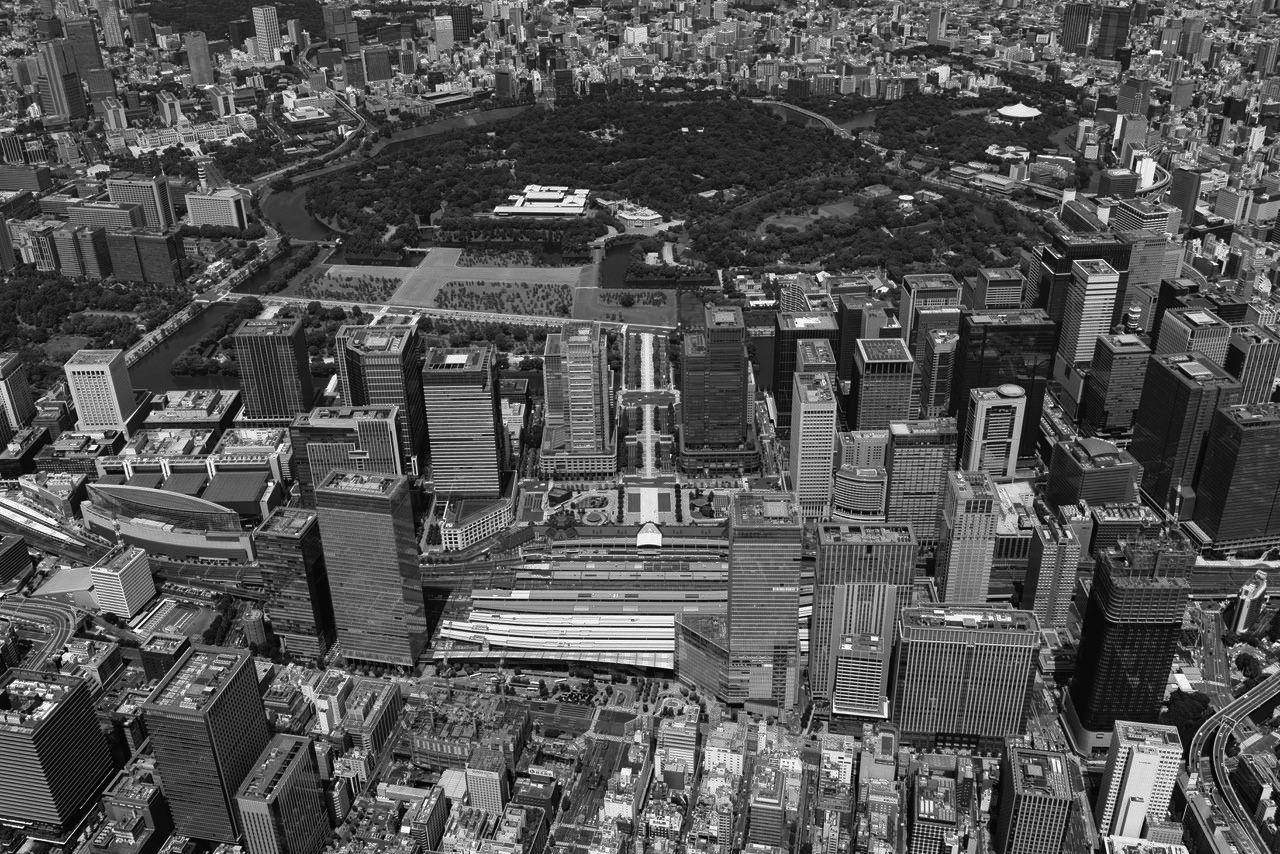Marunouchi: the quest for perfection
Perfectionism is very important in Japan. In the collective national quest to slowly achieve the immaculate, Tokyo’s Marunouchi district may come close to that goal. Whenever designers sketch out future business districts, the idealised result might look like Marunouchi today. During my stay there last week, I saw what looked like an immaculate architect’s drawing – happy, well-dressed people strolling along tree-lined sidewalks with inviting restaurants beneath railway arches. Above the arches, the magnificent Shinkansen bullet train glided into Tokyo Station. Perfectly on time as ever.
This flawless picture was, of course, not necessarily reflective of all Japan or even all Tokyo. My short visit was more like creating an impression of France based on six days in La Défense. Marunouchi is bigger, better and feels somehow younger than its French counterpart. Unlike La Défense, it was mainly conceived around public transport rather than the motor car and has not been grafted on to a historic city centre. Instead, it IS the city centre, sandwiched between two key Tokyo landmarks, the high energy of the main train station and the serenity of the Imperial Palace gardens.
“Marunouchi has 13 stations, 28 train lines and 102 buildings – each one a colossal mixed-use, high value achievement”
With a long-term owner’s patient vision, the Mitsubishi Estate Group (my own company’s major shareholder) has continued to improve and manage much of this coveted area since first buying grassy fields from the Meiji government in 1890. In 1914, when the Tokyo Station opened, the district was designed to echo red brick Britain and known as ‘The London Block’. Now in 2022, Marunouchi has 13 stations, 28 train lines and 102 buildings – each one a colossal mixed-use, high value achievement. Prime office rents there remain 25-30% above anywhere else in the country (source CBRE). Today, Mitsubishi Estate Group owns and manages 32 Marunouchi properties and is developing Japan’s future highest building, the 390m Torch Tower – intended as “a beacon bringing light and energy to Japan”.
Marunouchi is a role model of 24/7 urban planning, animated by mixing residences, shops, restaurants, bars, hotels and 280,000 office workers. Above ground, Marunouchi’s pavements are so clean that I felt for Japanese visitors discovering Europe’s graffitied streets littered with cigarette butts. Below ground, extensive walkways offer shelter from Tokyo’s extremes of weather and connect the entire district. I tried exploring this huge warren of passages without either a local colleague or the comfort of wifi phone connection. Unable to decipher Japanese characters on maps, I quickly got properly lost.
Like other major Asian cities, Tokyo has a culture of perfectly served quality cuisine within covered malls. My Japanese colleagues introduced me to Marunouchi’s excellent ‘Innocent Carvery’, a reference to the perfection of the restaurant’s grilled beef cuts. At the next night’s traditional yakitori restaurant, the cuts of chicken were, quite deliberately, not so perfect. Instead, our set menu slowly explored the whole anatomy of a chicken. Even after almost 30 years in carnivorous France, this proved quite testing. After sticks of tasty shoulder meat, it gradually became best not to know exactly what was arriving on the wooden skewers. Fibrous diaphragm was succeeded by crusty gizzard balls and then hefty and pungent livers. When the less-challenging chicken breast finally arrived, it was barely cooked.
In Japan, the small stuff really matters, and I saw plenty of eccentric cultural details without even leaving the hotel lobby; a curious receptacle to shampoo/blow-dry poodles, a long queue for the airtight smoking room and, of course, the warm and high-tech toilet seats.
Looking back, the Japanese concern for personal hygiene and respect for the wellbeing of others now feels ahead of the times. Simply inclining the head and shoulders Japanese-style is now a common alternative greeting to an awkward fist-bump. In our London office pre-Covid, it had felt exotic to see Japanese colleagues masked (out of courtesy to others) when they had a sniffle. Last week, regulated anti-Covid behaviours were still prominent in Tokyo, with temperatures frequently checked and meetings held behind Plexiglass screens and stuffy masks. Hotel breakfasts came with creepy plastic gloves and a neat paper mask case – presumably for storing a facemask between mouthfuls of rice. Japan has recorded relatively few Covid deaths, but strict self-isolation may have come at an economic and social price. Around the world, the quest continues for the perfect response to Covid-19.
In the three years since my previous visit to Tokyo, Japan has seen two Black Swan events and an Olympic Games. The major missed opportunity of Japan’s 2020 Olympics (held in 2021 behind closed doors) was not welcoming a curious outside world to this unique island nation. In this volatile 2022, Tokyo remains a welcome island of stability, with inflation still low and the dovish Bank of Japan holding interest rates below 0%. In uncertain times, the near-perfection of Marunouchi felt, reassuringly, like a bubble within a bubble.







